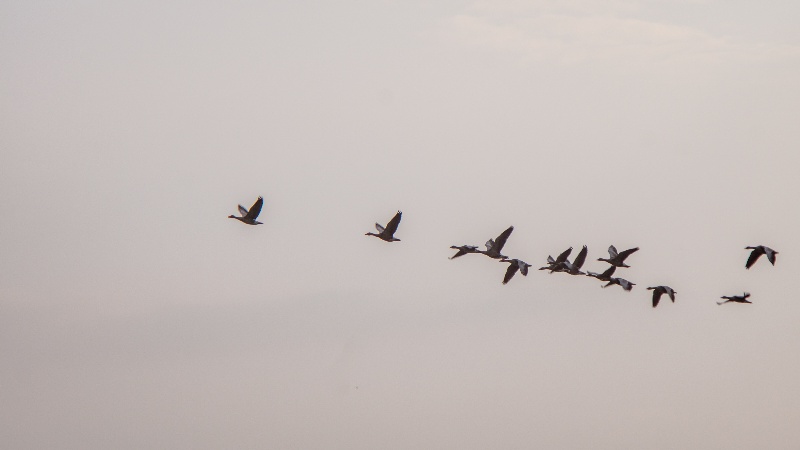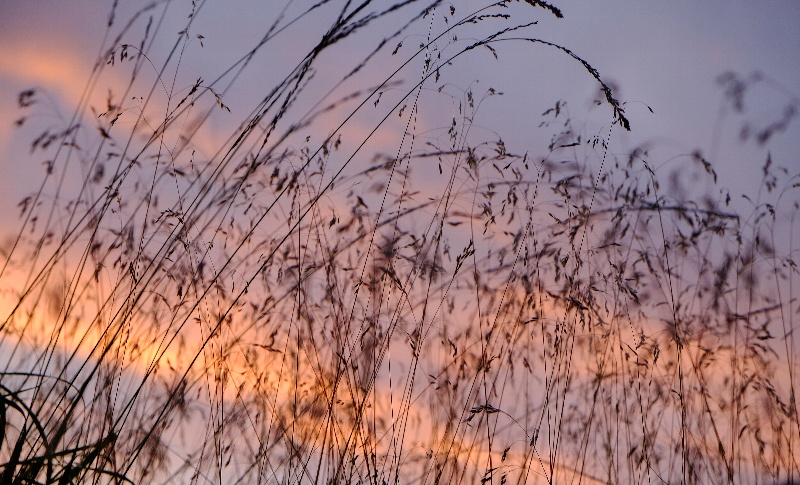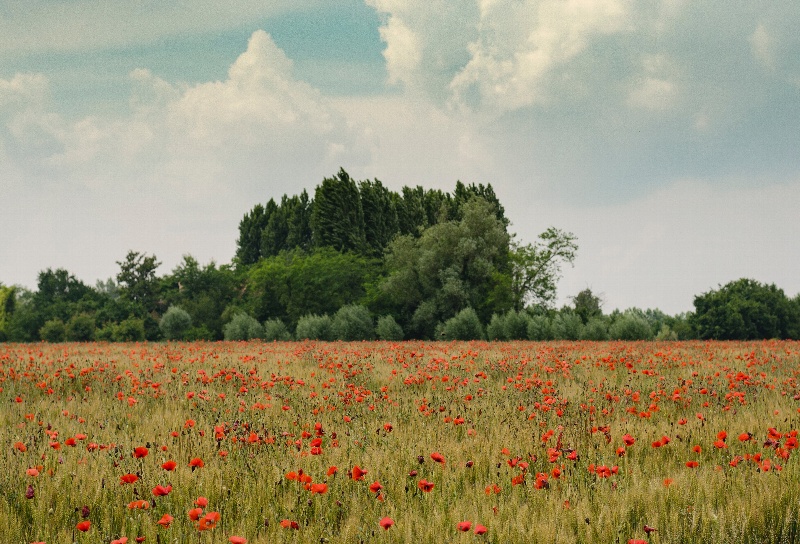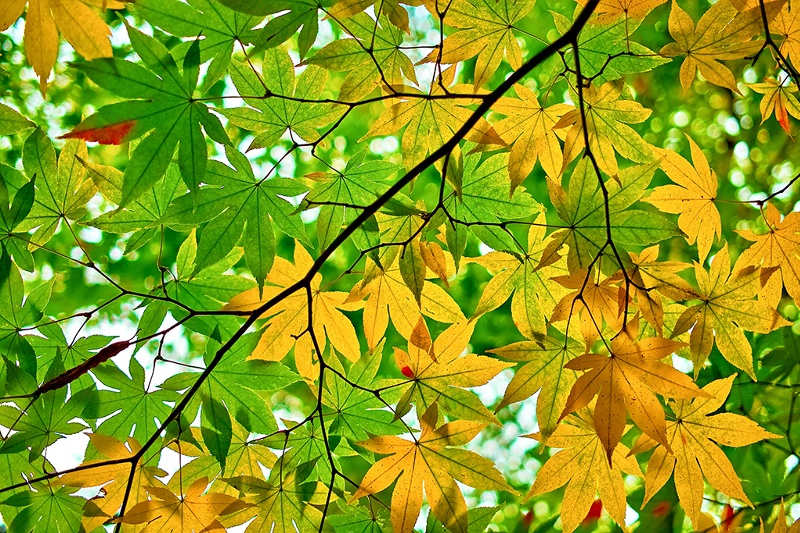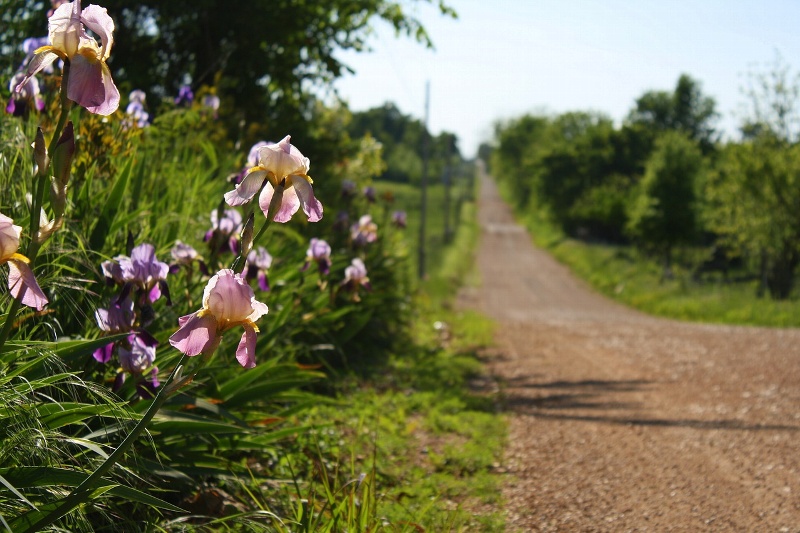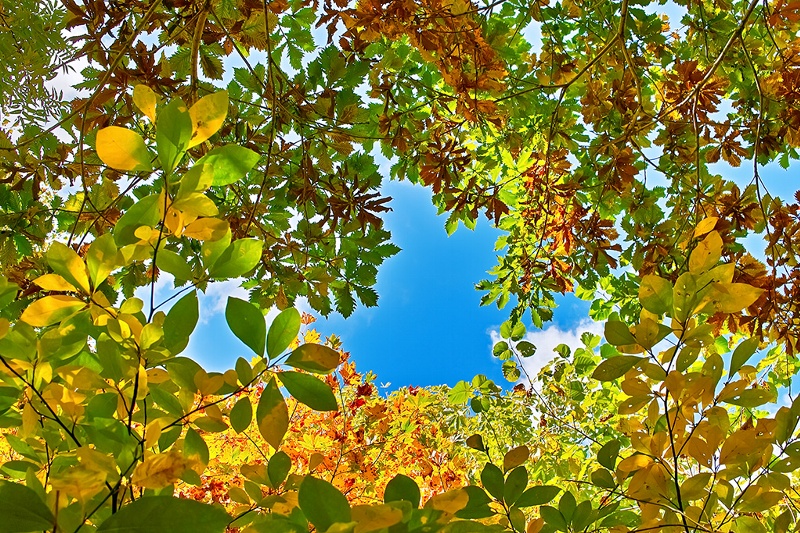Imagination is a key to fully capturing the beauty of nature. That’s what poets from Kokinshu often do. They are not necessarily obsessed about depicting natural phenomena in detail, but instead they often let their imagination work to personify or magnify what can be found in the natural settings. Let’s look into into the technique.
想像力は自然描写に欠かせない。それが古今集歌人の特徴です。自然の事物を詳細に描くことにはあまり執着せず、その代わり、目に映るものを擬人化したり大げさに表現したりします。そこにこそ想像力の役割があったのです。その技巧を見てみましょう。
ふくかぜの いろのちぐさに みえつるは あきのこのはの ちればなりけり
Fukukazeno irono chigusani mietsuruwa akino konohano chireba narikeriIn this extravaganza
The wind takes on glorious hues
Of gold and red
That falling leaves wildly diffuseLiterally:
I saw various colors in the wind. It’s like leaves in various colors, gushingly falling from the trees, are pigmenting the winds.
吹く風がさまざまな色に見えたのは 色とりどりの秋の木の葉が 風に乗って散っているからなんだなあ
Falling leaves painting the winds. How poetic! This is how imagination works. It seems like Japanese people have somewhat spiritual affinity for this type of imaginative and romantic lyricism and people have long been attracted by something perceived by intuition instead of something achieved through building up rational arguments. Oftentimes imagination fully works out of a logical structure. Another background is polytheistic tradition of this country. Natural objects such as rocks and mountains, natural phenomena such as winds and fire, and also historic figures were and have been treated as gods. This somehow makes it easy for poets to personify and identify with what they see and hear in the nature. In the end, let’s get back to its preface and see what this is all about.
風を彩るのは、舞い散る木の葉。詩情溢れ美しいですね。まさに想像力のなせる業ですね。こういった想像力あふれるロマンチックな表現は、日本人と親和性が高いように思われます。論理的な議論によって積み上げられるものよりも、感覚的なものにより惹かれてきた。そして想像力が、論理的な枠組みをはみ出たところで発揮されるのだと。もう一つの背景は、多神教的な風土と言えるでしょう。岩や山といった自然界のもの、風や火といった自然現象、さらには歴史上の人物までもが神として祀られたのです。こういったことが自然のなかで見たり聞いたりするものと同一化したり、それらを擬人化したりすることを容易にしたのではないでしょうか。終わりに、序文である仮名序に改めて戻り、そのことを確認してみましょう。
やまとうたは
人の心を種として
よろづの言の葉とぞなれりけるOur poems
Are born of our kernel hearts
Grow into millions of leaves世の中にある人
ことわざしげきものなれば
心に思ふことを見るもの聞くものにつけて
言ひいだせるなりThe world of mankind
teeming with earthly business
Finds a path for sensations
through whatever catches our eyes and ears花に鳴く鶯
水に住む蛙の声を聞けば
生きとし生けるもの
いづれか歌をよまざりけるNightingales warble in flowers
Frogs croak at the pond
The living things
Are all endowed with
Poetic spirit力をも入れずして天地を動かし
目に見えぬ鬼神をもあはれと思はせ
男女のなかをも和らげ
猛きもののふの心をもなぐさむるは歌なりOur poems
Give the universe an effortless turn
Derive much inspiration from divine spirits
Soothe feelings between men and women
And subdue warrior fearlessness

